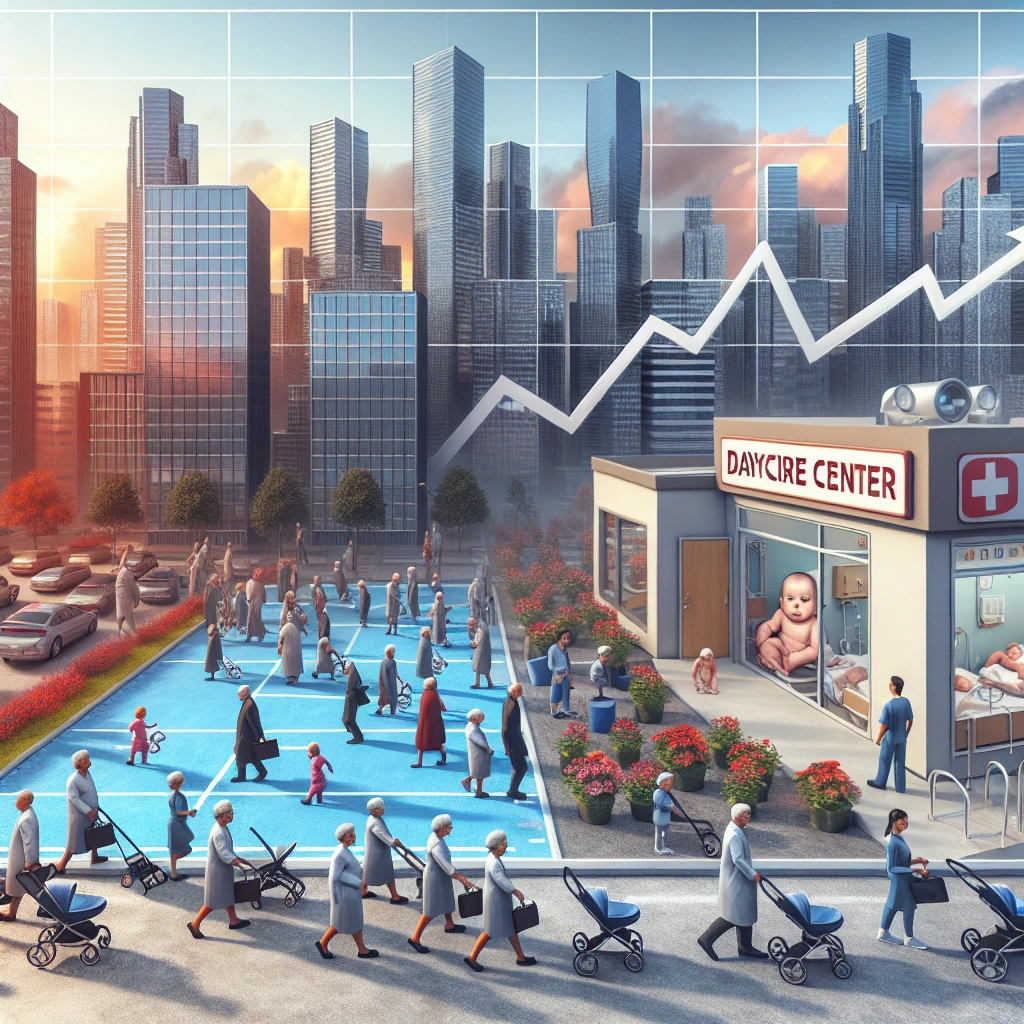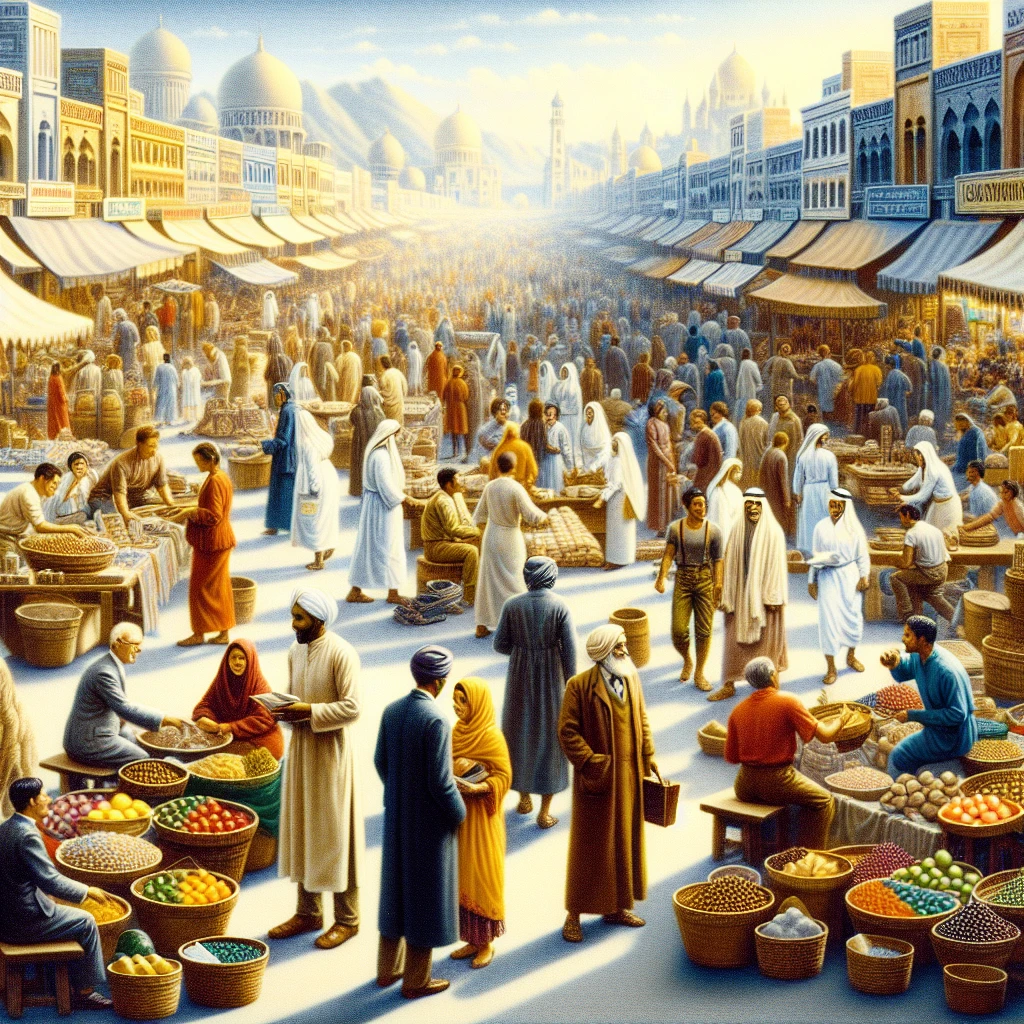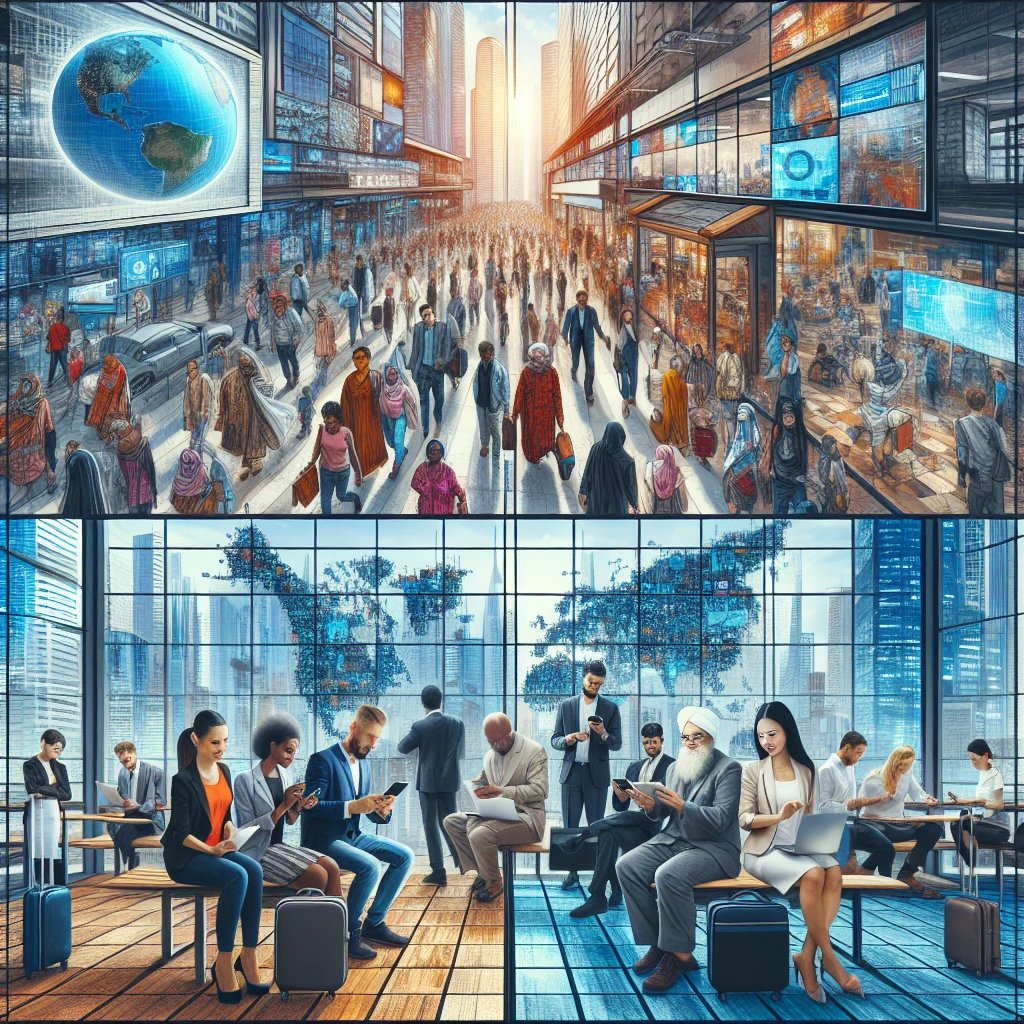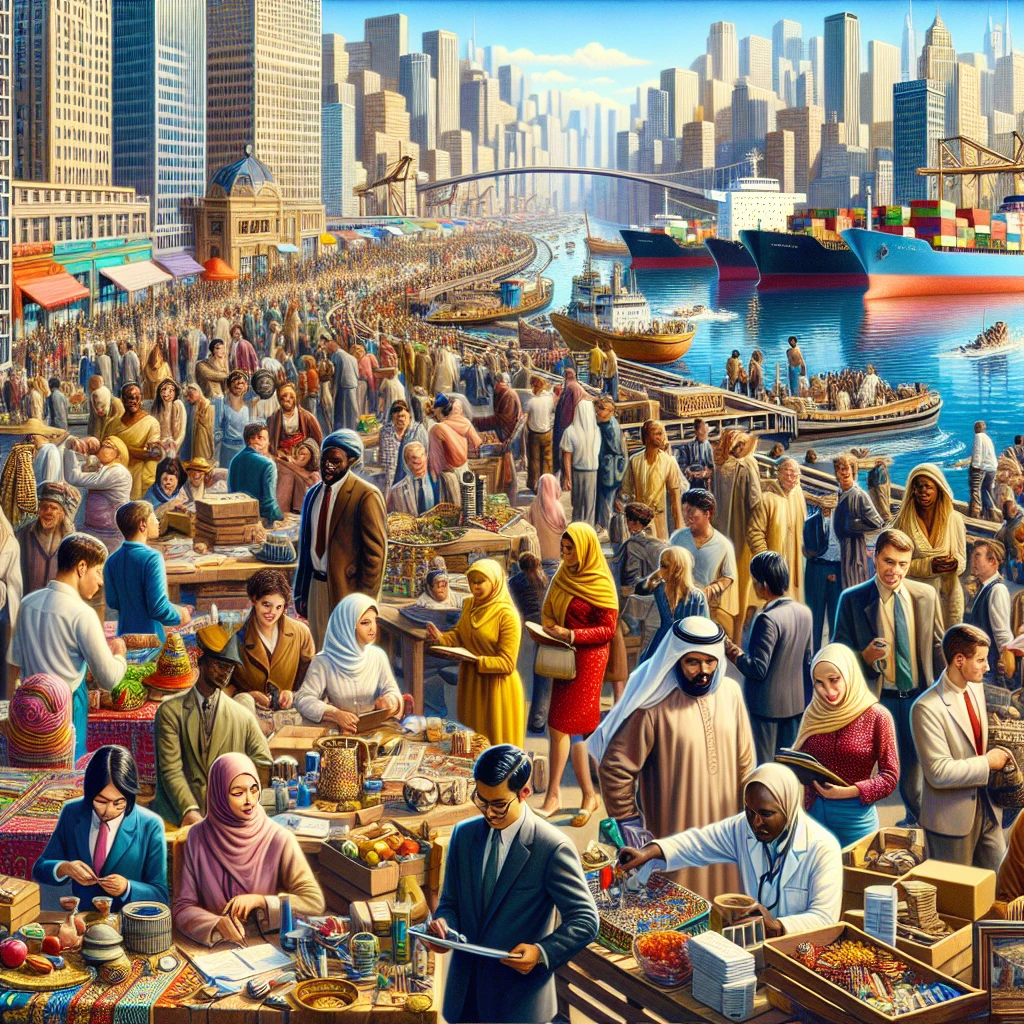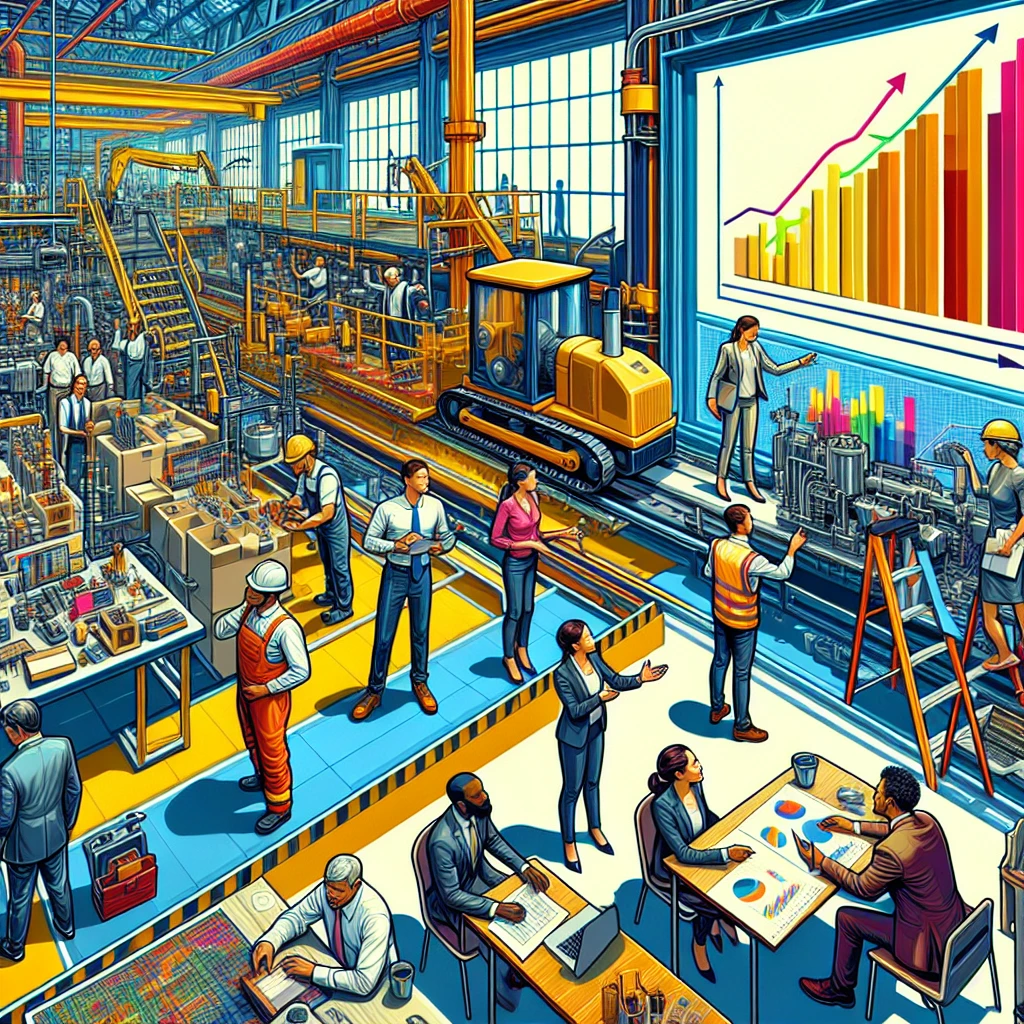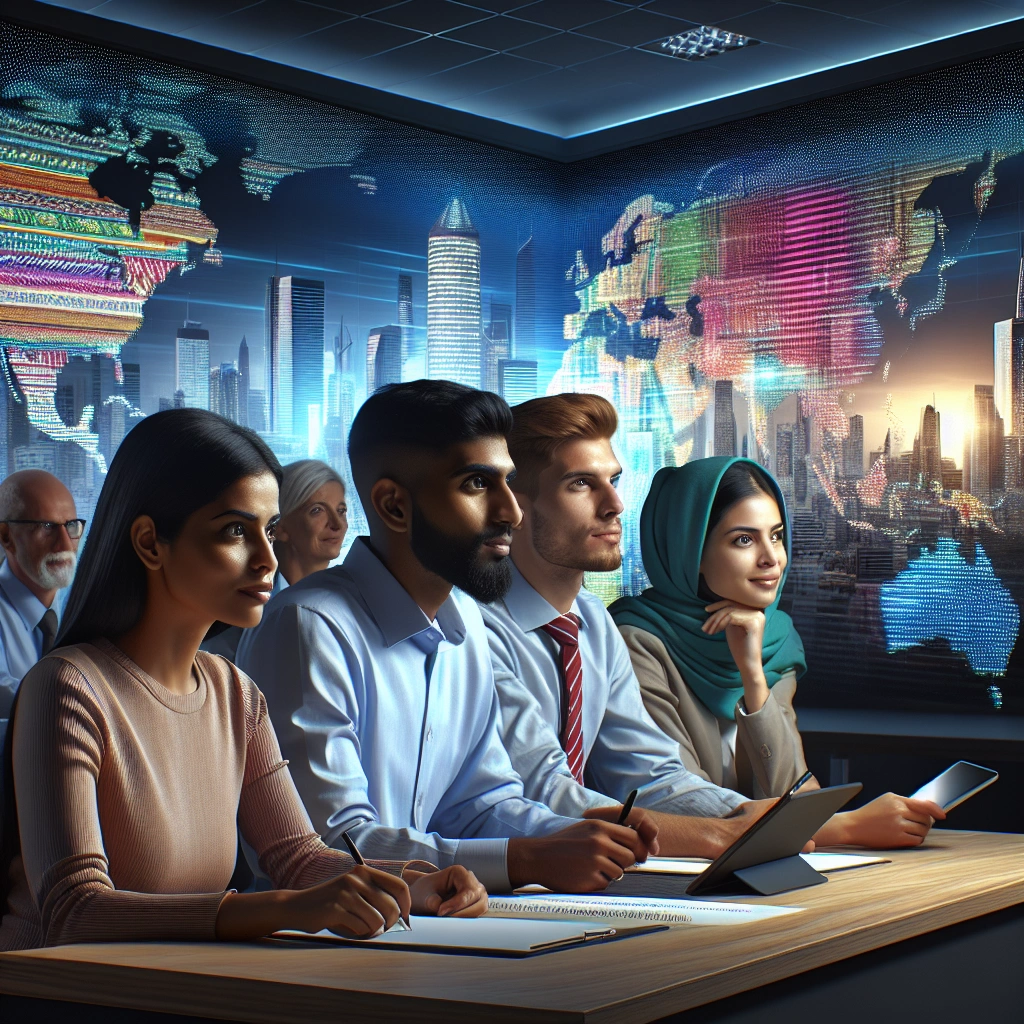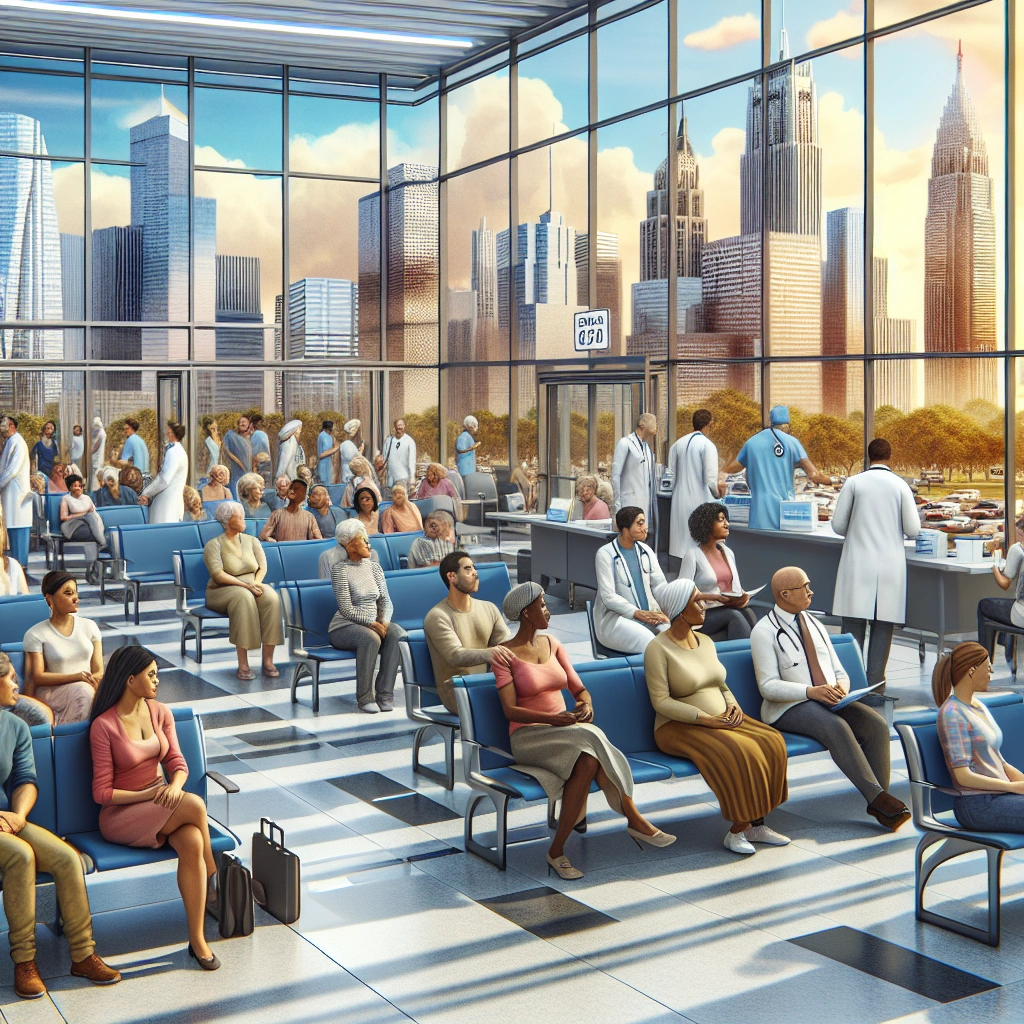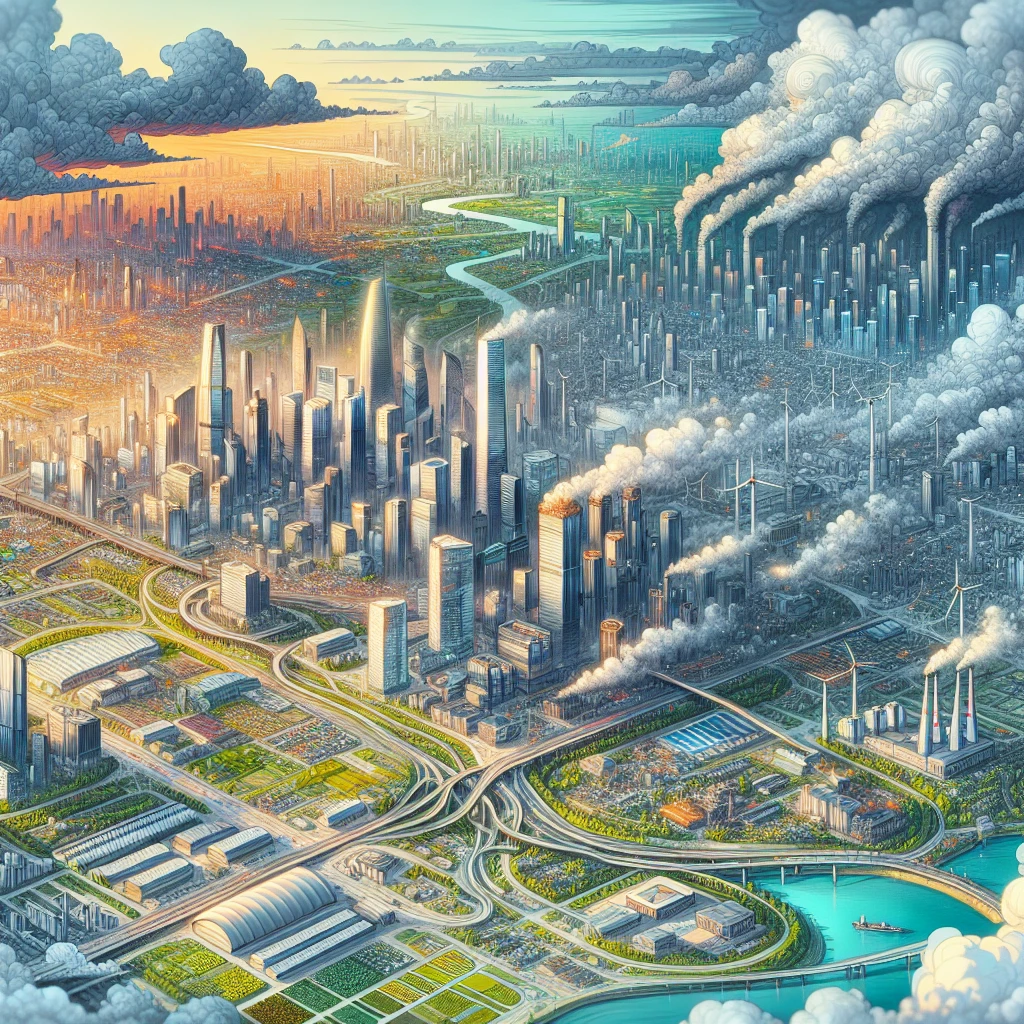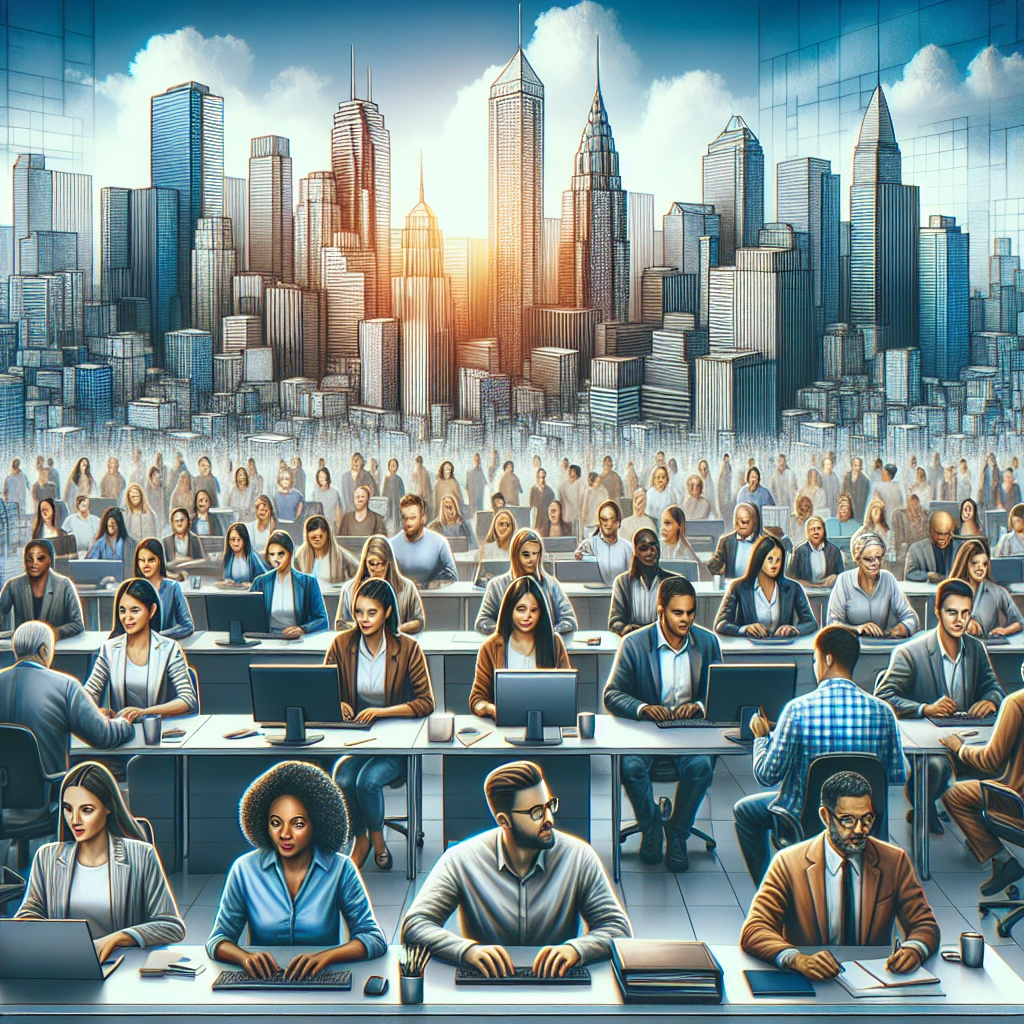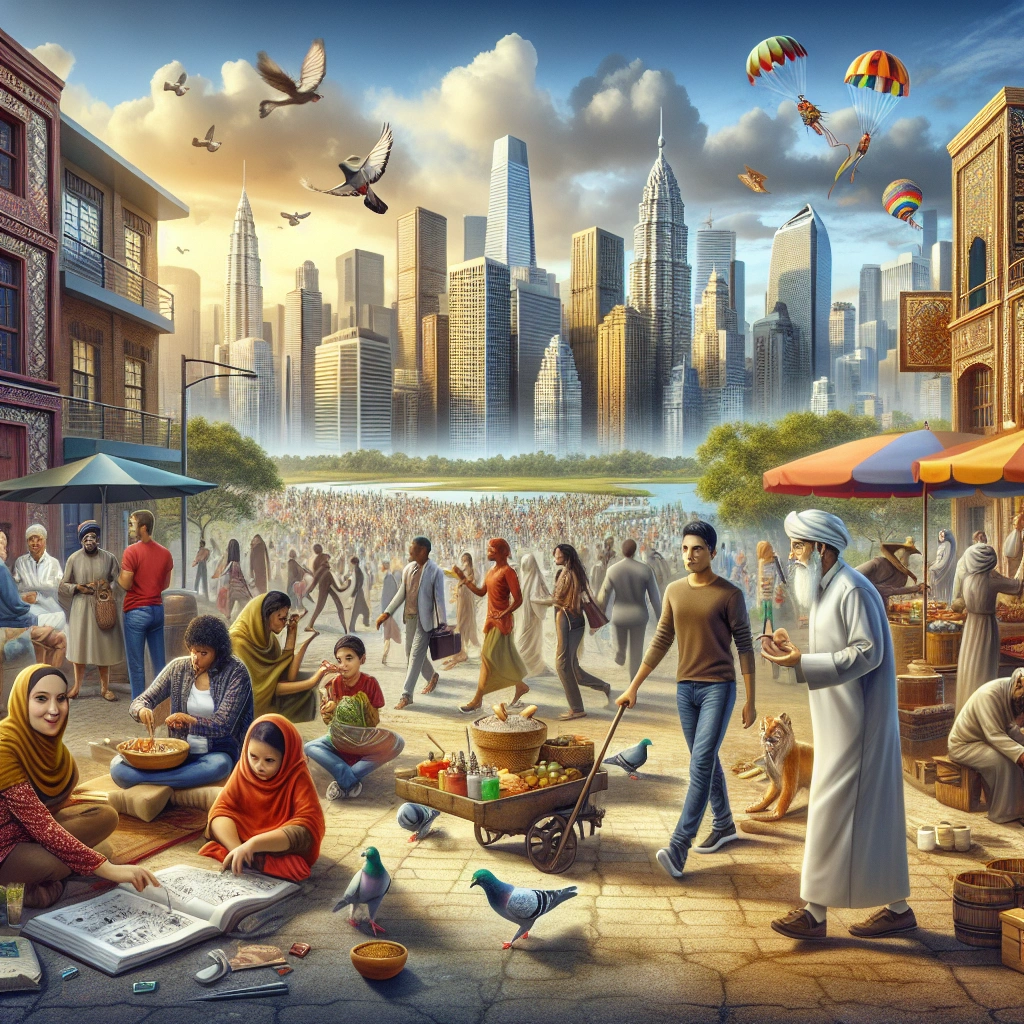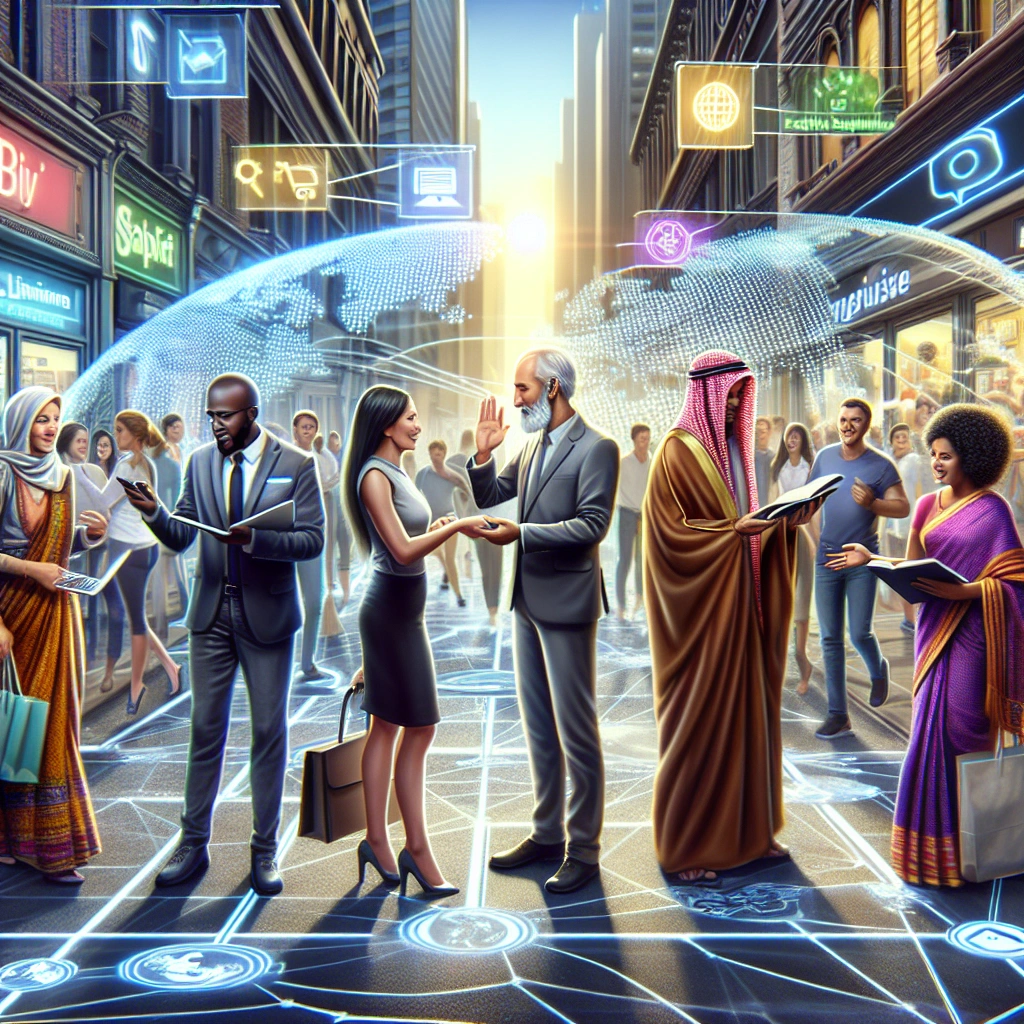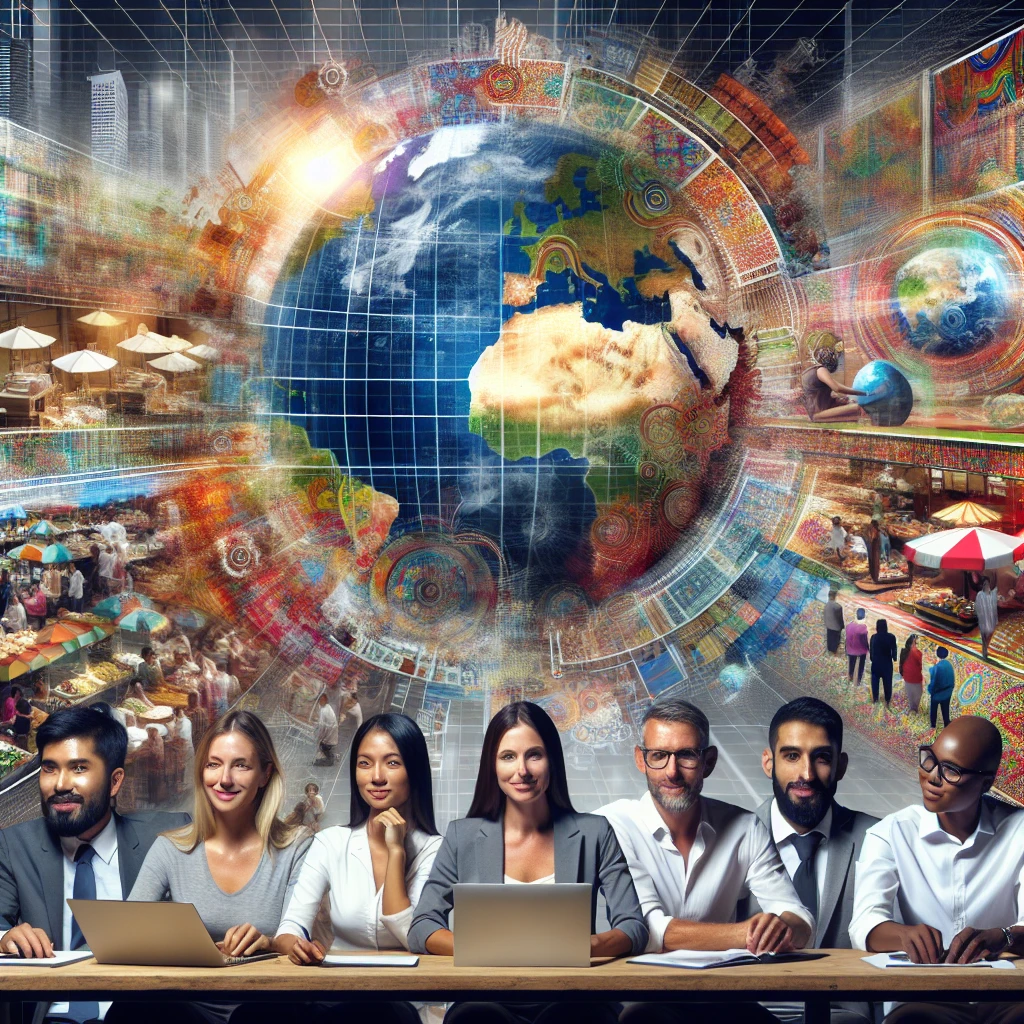

Demographics in the global economy refer to the statistical data related to the population, including factors such as population growth, fertility, mortality, and population aging. Understanding changing demographics is crucial as it can influence economic growth, productivity, living standards, savings rates, consumption, and investment, as well as unemployment rate, housing market trends, and demand for financial assets.
The global economy is currently undergoing a major demographic upheaval, with significant changes in population indicators and projections for dramatic changes in the coming decades.
Check out this Youtube video discussing the changing demographics of the global economy and how it impacts business and finance!
The Evolution of Demographics in the Global Economy
Historical changes in global economic demographics
Historically, global economic demographics have witnessed a remarkable transformation. Over the past centuries, there has been a significant evolution in population growth, fertility, and mortality rates worldwide.
For instance, it took more than 50,000 years for the world population to reach 1 billion people, emphasizing the substantial shifts in population dynamics over time.
Impact of globalization on demographics
The impact of globalization on demographics is profound. Globalization has led to a swift increase in individuals’ mobility from rural to urban areas, closely interconnected with global trends in areas such as food, markets, fashion, and leisure.
Such demographic shifts have redefined the global workforce and consumer behavior, shaping the economic landscape in unprecedented ways.
| Example | Impact |
|---|---|
| Swift urbanization | Rapid urbanization due to globalization has transformed consumption patterns and economic structures globally. |
| Cross-cultural influences in consumer behavior | Globalization has facilitated the fusion of cultural influences, impacting consumer preferences and demands. |
The historical changes in global economic demographics coupled with the impact of globalization have reshaped the global economy, influencing labor markets, consumer behavior, and economic growth.
Remember, the evolution of demographics profoundly shapes the economic landscape, and understanding these shifts is crucial for businesses and policymakers to adapt and thrive in the global economy.
The Current State of Global Economic Demographics
Current demographic trends in major economies
The current demographic trends in major economies are characterized by significant shifts in population age and composition. Notably, there is a significant increase in the aging population due to higher life expectancies and declining birth rates.
This trend poses challenges such as increased healthcare costs and a potential shortage of skilled labor. Additionally, there is a growing presence of the millennial generation, influencing consumption patterns and economic behaviors.
Another essential aspect is the changing home dynamics with declining marriage rates and an increasing number of women entering the labor force. These shifts are impacting household structures and influencing consumer spending and saving patterns.
Furthermore, the force of immigrants is driving population growth in numerous economies, contributing to diverse cultural influences and labor market dynamics.
| Demographic Trend | Impact on Economy |
|---|---|
| Aging population | Increased healthcare costs, potential labor shortage |
| Millennial influence | Altered consumption patterns and economic behaviors |
| Changing home dynamics | Impact on household structures and consumer spending |
| Immigrant population growth | Diverse cultural influences and labor market dynamics |
Influence of migration on global demographics
The influence of migration on global demographics is substantial, with net immigration playing a pivotal role in maintaining population stability and economic growth, particularly in aging, advanced economies. The influx of immigrants contributes to workforce expansion, addressing skill shortages and bolstering consumer spending.
Moreover, in regions such as Oceania, Africa, Asia, and Latin America, net migration is anticipated to become a crucial component of population growth, shaping cultural diversity and labor market dynamics. Migration is a significant driver of demographic shifts, contributing to social, cultural, and economic complexities in various nations.
The changing demographics of the global economy are profoundly influencing economic and social landscapes, mandating an adaptive approach to address the evolving needs and dynamics of contemporary societies.
Remember, change is always happening; opportunity comes to those who embrace it, and we are at a point where demographics are literally reshaping the world!
The Role of Aging Population in the Global Economy
Economic implications of an aging population
The economic implications of an aging population are significant and multifaceted. As the population ages, there is a decline in the working-age population, leading to a shortage of qualified workers and a subsequent impact on gross domestic product (GDP) growth.
Additionally, the burden of supporting the elderly falls on the working-age population, resulting in increased government spending and strain on public budgets. Furthermore, the healthcare expenditures rise due to the healthcare needs of the aging population.
Strategies to address the challenges of an aging workforce
Implementing policies to encourage the older population to stay in the workforce for longer can provide a solution to the challenges of an aging workforce. This could involve intergenerational workshops, mentorship programs, and coaching initiatives within companies, fostering knowledge transfer from experienced older employees to the younger workforce.
Additionally, focusing on chronic disease management, ergonomics, and overall health and wellness programs tailored to older workers can help address the challenges posed by an aging workforce.
| Economic Implications of Aging Population | Strategies to Address Aging Workforce |
|---|---|
| – Decline in working-age population | – Intergenerational workshops |
| – Slow GDP growth | – Mentorship and coaching initiatives |
| – Increase in healthcare expenditure | – Chronic disease management and wellness programs |
The changing demographics of the global economy due to an aging population require proactive measures to mitigate the economic implications and challenges posed by the changing workforce dynamics.
The Impact of Changing Birth Rates on the Global Economy
Effects of declining birth rates on economic growth
- Less Labor Force: Declining birth rates lead to a shrinking workforce, limiting the potential for economic expansion and growth. This scarcity of labor negatively impacts various industries and hinders overall productivity.
- Aging Population: With fewer births, the population demographics skew towards an older age group. This imbalance causes strain on social welfare systems, healthcare, and pension schemes, affecting economic stability.
Solutions to address declining birth rates
- Family Policies: Implementing comprehensive family policies, such as subsidized childcare, paid parental leave, and tax incentives for larger families, can encourage higher birth rates and support working parents.
- Educational and Career Opportunities: Providing accessible education and ample career opportunities, particularly for women, can alleviate concerns about balancing family and profession, potentially leading to higher birth rates.
Gender and Diversity in the Global Economy
The changing role of gender diversity in the workforce
Gender diversity in the workforce is undergoing a significant transformation, with women’s participation steadily increasing in various industries. In 2023, women accounted for almost 42% of the global workforce, marking a notable progression.
Despite this, the underrepresentation of women in senior leadership positions, such as director and vice president, persists, indicating the need for continued efforts to bridge this gap. According to the World Economic Forum, advances in gender equality have slowed down significantly, projecting a 131-year span to attain full gender parity at the current rate of progress.
Benefits of diversity in the global economy
The economic benefits of diversity in the workplace have been substantiated by multiple studies, revealing that companies embracing diverse workforces and fostering inclusive cultures achieve higher productivity. Research confirms that companies with above-average diversity scores drive an average of 45% revenue from innovation, whereas those with below-average scores only achieve 26%.
Furthermore, diverse teams, encompassing individuals from different backgrounds and genders, exhibit superior performance across multiple dimensions, affirming the substantial impact of diversity on the global economy.
| Key Benefits of Diversity in the Global Economy |
|---|
| Higher Productivity |
| Enhanced Innovation |
| Superior Team Performance |
| Improved Problem-Solving |
These powerful findings emphasize the essential role of gender diversity and overall diversity in propelling economic growth and innovation across industries.
Technology and the Changing Demographics of the Global Economy
The influence of technology on the global workforce
Technology has revolutionized the global workforce, altering the way businesses operate. With the introduction of automation, tasks previously performed by humans are now efficiently handled by machines.
This shift minimizes the probability of human error and significantly reduces labor costs, allowing companies to invest resources in other key areas of their operations. For instance, AI recruiting tools and industrial automation have facilitated a streamlined workplace environment, enhancing overall productivity.
Implications of automation on workforce demographics
The advent of automation has profound implications on workforce demographics, resulting in a shift in job roles and skill requirements. While technological advancements are expected to create new job opportunities, they also bring about changes in existing roles.
According to the World Economic Forum’s Future of Jobs Report 2023, approximately a quarter of jobs are expected to undergo significant alterations, influenced by factors such as the green transition and technological advancements. Moreover, research indicates that automation affects workers differently based on their employment status, thereby contributing to potential disparities in income and job security.
Understanding the impact of automation on workforce demographics is crucial in addressing potential challenges arising from technological developments, ensuring equitable opportunities for all individuals despite the evolving job landscape.
The Changing Demographics of Consumer Markets
Understanding consumer behavior based on demographics
Understanding consumer behavior based on demographics is crucial for businesses to effectively target their audiences. Demographic factors such as age, gender, income, education, and marital status significantly shape consumer behavior, influencing their purchasing decisions and brand loyalty.
For example, different age groups may have varying preferences for product qualities and types, necessitating tailored marketing strategies to resonate with each demographic segment.
Strategies for targeting diverse consumer demographics
To target diverse consumer demographics effectively, businesses can employ strategies that resonate with different groups. For example, analyzing market data and consumer trends enables companies to identify unique opportunities and tailor marketing strategies accordingly.
Moreover, establishing formal mentoring programs as part of diversity marketing initiatives can create a more inclusive workplace and foster consumer trust among diverse audiences. Additionally, authentic reflection of a range of backgrounds and experiences within marketing messaging is imperative in connecting with future customers from various demographic backgrounds.
| Segment | Strategy |
|---|---|
| Age-based demographics | Tailored product offerings and advertising based on age groups |
| Income-based demographics | Pricing strategies to appeal to different income brackets |
| Gender-based demographics | Gender-inclusive marketing campaigns and product designs |
| Cultural and ethnic demographics | Localization of marketing messages and product features |
These strategies highlight the significance of understanding consumer behavior based on demographics and the need for targeted approaches to cater to diverse consumer segments effectively.
The Global Economy and Immigration
The economic impact of immigration on global demographics
Migration significantly influences the global economy and demographics by affecting both the labor force and consumer base, leading to shifts in population distribution and cultural diversity. For instance, in countries like the United States, immigrants have contributed to economic growth by filling labor shortages and starting new businesses, ultimately boosting productivity and innovation.
Moreover, as regions experience demographic changes due to immigration, it impacts consumer preferences, creating opportunities for businesses to cater to diverse markets.
Policies and attitudes towards immigration in different regions
Policies and attitudes towards immigration vary across different regions, shaping the socio-economic impacts of migration. For example, in countries like Canada, an open and well-regulated immigration policy has helped in attracting skilled workers and fostering diversity, contributing to economic prosperity.
In contrast, regions such as Europe exhibit differing attitudes towards immigrants, influenced by factors like the share of foreign-born populations and national identity perspectives. As a result, these varied policies and attitudes can either hinder or promote the economic and social benefits brought about by immigration.
| Country | Immigration Policy | Economic Impact |
|---|---|---|
| United States | Immigration contributes to economic growth and innovation | Labor force boost, business start-ups, and consumer diversity |
| Canada | Open and regulated immigration policy | Attraction of skilled workers and economic prosperity |
| Europe | Differing attitudes influenced by foreign-born populations | Varied socio-economic impacts |
Immigration profoundly impacts the global economy and demographics, with its effects on labor forces, consumer behavior, and cultural diversity. Furthermore, distinct immigration policies and attitudes in different regions significantly shape the economic and social outcomes of migration, highlighting the need for balanced approaches to leverage its potential benefits while addressing societal concerns and challenges.
The Changing Demographics of the Labor Force
The shifting demographics of the global economy have led to significant changes in the labor force. With the increasing diversity in racial and ethnic groups, the labor force has witnessed a transformative shift over the past few decades.
For example, the non-white fraction of all U. S. workers has grown from 12% to 22%, while the Hispanic or Latino workforce has surged from 5% to 18%, showcasing a remarkable transformation in the composition of the labor force.
These demographic changes have far-reaching implications for both businesses and governments. Employers are now compelled to adapt their recruitment strategies to align with the evolving demographics, considering the impact on labor markets and the emergence of potential skills gaps.
As a result, they need to explore diversified recruitment sources to address emerging worker shortages effectively.
Moreover, the changing demographics also present both opportunities and challenges for businesses and governments. Embracing workforce diversity becomes a pivotal strategy for businesses to leverage the benefits of a multicultural labor force, while policymakers need to address age-related biases and ensure effective retirement planning to support the evolving demographics.
In essence, the changing dynamics of the labor force demand a proactive approach from businesses, governments, and policymakers to navigate the evolving landscape and build a resilient, inclusive, and adaptable labor force for the future. By embracing workforce diversity, supporting knowledge transfer, and addressing age-related biases, the labor force can thrive in the midst of these demographic shifts.
| Shift in Labor Force Demographics | Implications for Businesses and Governments |
|---|---|
| Non-white fraction grew from 12% to 22% | Embracing workforce diversity becomes crucial for businesses |
| Hispanic or Latino workforce grew from 5% to 18% | Policymakers need to address age-related biases and support effective retirement planning |
The changing demographics of the global economy have led to a tectonic shift in the labor force, compelling both businesses and governments to adapt to the emerging landscape by embracing diversity and addressing age-related biases to build a resilient labor force for the future.
Education and Training for the Changing Global Workforce
The need for education and skills training in a changing economy
In today’s ever-changing global economy, the need for continuous education and skills training has become imperative. With the rise of automation, digitization, and the push for sustainable practices, the nature of work and skills demands are evolving at a rapid pace.
This necessitates a proactive approach to continuously upskill the workforce and equip individuals with the necessary competencies to thrive in this dynamic environment.
Adapting education systems to meet the needs of diverse demographics
As the global economy experiences changing demographics, adapting education systems to cater to diverse demographics plays a crucial role in ensuring inclusivity and equitable opportunities for all. Greater multicultural awareness and inclusion not only support the success of students from various backgrounds but also foster acceptance and cohesion within our societies.
Furthermore, it is essential to prepare students to interact and collaborate in diverse work environments, emphasizing the need for culturally relevant curricula and teacher training programs to meet these evolving demands effectively.
Social Welfare and Healthcare in a Changing Demographic Landscape
Addressing the needs of an aging population
The changing demographics of the global economy have catalyzed a shift in the healthcare landscape, necessitating a reevaluation of how we address the needs of an aging population. With a projected doubling of the population aged 65 and older by 2060, comprising 25% of Canada’s total population, there is a critical imperative to bolster support programs. For instance, Ontario’s “Aging with Confidence” action plan adopts a proactive stance in ensuring the safety and security of seniors, encompassing programs and services to combat abuse and neglect, promote wellness, and provide essential care.
Ensuring access to healthcare for diverse demographic groups
In light of the changing demographics of the global economy, it is imperative to ensure equitable access to healthcare for all demographic groups. Initiatives such as California’s “Master Plan for Aging” articulate the importance of an “age-friendly” approach with goals centered around inclusive housing, reimagined healthcare, and caregiving that works. Moreover, data from the National Healthcare Quality Report underscore the significance of addressing disparities in healthcare access among diverse population segments, emphasizing the need for integrated, comprehensive strategies to ensure equitable healthcare provision across communities.
| Population Group | Access to Healthcare |
|---|---|
| Elderly | Proactive aging plans and abuse prevention programs |
| Diverse Demographics | Inclusive healthcare initiatives and strategies to address disparities in access |
Navigating the changing demographics of the global economy necessitates a concerted effort to address the healthcare needs of an aging population and facilitate equitable access to healthcare for diverse demographic groups. The proactive implementation of comprehensive programs and initiatives is foundational in ensuring the well-being and security of seniors and promoting inclusive healthcare provision for all segments of the population.
The Environmental Impact of Changing Demographics
The connection between demographics and environmental sustainability
Population growth and changing demographics have a direct impact on environmental sustainability. With nearly 10 billion people projected by 2060, there will be increased consumption of resources, higher greenhouse gas emissions, and greater demand for food production, all contributing to environmental degradation and rising temperatures.
This rapid population growth leads to deforestation, climate change, and loss of biodiversity, which in turn disproportionately affects underserved communities in terms of heat waves, air quality, and flooding, as highlighted in a recent EPA report.
Adapting to environmental challenges in a changing world
Adapting to the environmental challenges posed by changing demographics requires a multi-faceted approach. One strategy for climate change adaptation is to revise land use plans and protect critical infrastructure, which is essential in reducing the impact of climate risks on water management.
Additionally, building resilient foundations with rapid and inclusive development, helping people and firms recover faster and better, and boosting the adaptive capacity of households and firms are crucial steps in adapting to climate change. Mitigation efforts, such as reducing the flow of heat-trapping greenhouse gases, also play a critical role in adapting to the environmental challenges brought about by changing demographics.
Balancing Economic Growth with Changing Demographics
As we navigate the dynamic landscape of the global economy, it is imperative to develop strategies that ensure sustainable economic growth in the face of demographic changes. Embracing innovation and technology across industries can fuel productivity and efficiency, driving economic growth amidst shifting demographic patterns.
By investing in education and skill development, countries can equip their workforce to adapt to the evolving demands of the economy, fostering sustainability and resilience.
Furthermore, addressing inequality and disparity in diverse demographics is crucial for fostering an inclusive economic environment. Implementing social protection measures and combating discrimination are essential steps in reducing both within- and between-country inequality.
By fostering international cooperation for fair trade and financial systems, nations can strive towards equitable resource distribution, ensuring that diverse demographics have equal access to opportunities for economic prosperity.
| Economic Growth Strategy | Addressing Inequality and Disparity |
|---|---|
| Embracing innovation and technology | Implementing social protection measures |
| Investing in education and skill development | Combating discrimination |
| Fostering sustainability and resilience | Fostering international cooperation for fair trade and financial systems |
By adopting these strategies and addressing inequality head-on, the global economy can adapt to the changing demographics, thriving amid diversity and ensuring that economic growth is inclusive and sustainable.
The Future of Global Economic Demographics
Projected demographic trends and their implications
The world is on the cusp of a significant demographic shift, with the population aging at a rapid pace. By 2050, the number of individuals aged 60 and above is projected to surpass the number of children under the age of 5. This shift will have profound implications for various sectors, including healthcare, social security, and workforce dynamics.
Opportunities and challenges in a future of changing global demographics
As the global population ages, there will be a surge in demand for healthcare services and products, opening up vast opportunities for innovation and investment in the healthcare sector. However, this demographic shift also poses challenges, such as increased healthcare costs and strains on pension systems, necessitating strategic planning and policy reforms to ensure economic sustainability.
Recommended Amazon Products for Adapting to Changing Demographics in the Global Economy
Here’s a curated list of products that can help you adapt to the changing demographics in the global economy with ease. These recommendations are based on functionality, price, and reviews.
Ring Alarm 8-Piece Kit


The Ring Alarm 8-Piece Kit is a smart home security system that enables you to monitor and protect your home easily. It offers seamless integration with other Ring devices and has received excellent reviews for its reliability and ease of use.
| Pros | Cons |
|---|---|
| Easy to install and use | Monthly subscription required |
| Customizable security settings | Additional accessories may be pricey |
Kindle Paperwhite


The Kindle Paperwhite is a lightweight, waterproof e-reader with a glare-free display, allowing you to access a vast library of books in various languages. Its long battery life and adjustable font sizes make it perfect for catering to diverse reading preferences.
| Pros | Cons |
|---|---|
| Access to a wide range of books | Initial cost of the device |
| Adjustable font sizes | Additional accessories not included |
| Long battery life |
Kasa Smart Plug


The Kasa Smart Plug allows you to remotely control any device connected to it. It offers voice control with Alexa and Google Assistant, promoting accessibility for diverse demographic groups.
| Pros | Cons |
|---|---|
| Voice control options | Requires stable Wi-Fi connection |
| Remote control capabilities | Compatible with certain devices only |
| Energy monitoring feature |
Instant Pot Duo 7-in-1 Electric Pressure Cooker


The Instant Pot Duo is a versatile kitchen appliance that facilitates efficient and time-saving cooking. Its multi-use functionality and energy efficiency make it suitable for households with varying culinary preferences.
| Pros | Cons |
|---|---|
| Multiple cooking functions | Learning curve for beginners |
| Energy efficient | Capacity may be too large for some |
| Time-saving |
Bose QuietComfort 35 II Wireless Bluetooth Headphones


The Bose QuietComfort 35 II headphones provide high-quality sound and noise-cancellation features, catering to diverse preferences for listening comfort. Their wireless design allows for seamless mobility in different environments.
| Pros | Cons |
|---|---|
| Superior sound quality | Premium price point |
| Noise-cancellation feature | |
| Comfortable to wear |
Top Recommended Product for Adapting to Changing Demographics in the Global Economy
If you’re looking for the best solution for adapting to changing demographics in the global economy, we highly recommend the Ring Alarm 8-Piece Kit. This smart security system offers seamless integration, reliability, and ease of use, making it ideal for diverse demographic needs. Ready to adapt to changing demographics? Check out the Ring Alarm 8-Piece Kit today for the best results!


Conclusion
The changing demographics of the global economy will continue to have a significant impact on businesses, labor markets, and consumer behavior. As the population ages and urbanization increases, companies will need to adapt their products and marketing strategies to meet the needs of an older and more diverse customer base.
It is crucial for organizations to understand and leverage the opportunities presented by these changing demographics in order to remain competitive in the global marketplace.
Moreover, the shifting demographics will also have implications for the labor force, as companies will need to address skill shortages, and implement diversity and inclusion initiatives to attract and retain talent. By embracing diversity and creating inclusive work environments, businesses can benefit from a wider range of perspectives and improve their decision-making processes.
This will be instrumental in driving innovation and sustaining growth in an increasingly diverse global economy.
The changing demographics of the global economy present both challenges and opportunities for businesses. It is essential for companies to recognize the importance of adapting to demographic shifts and proactively incorporating diversity into their strategies and operations.
By doing so, organizations can position themselves for success in an evolving global marketplace.



